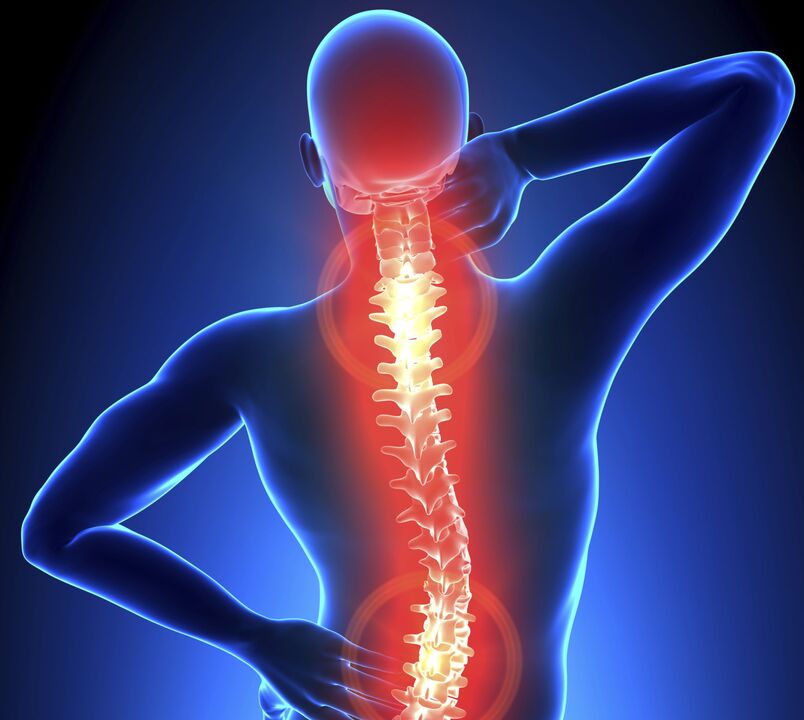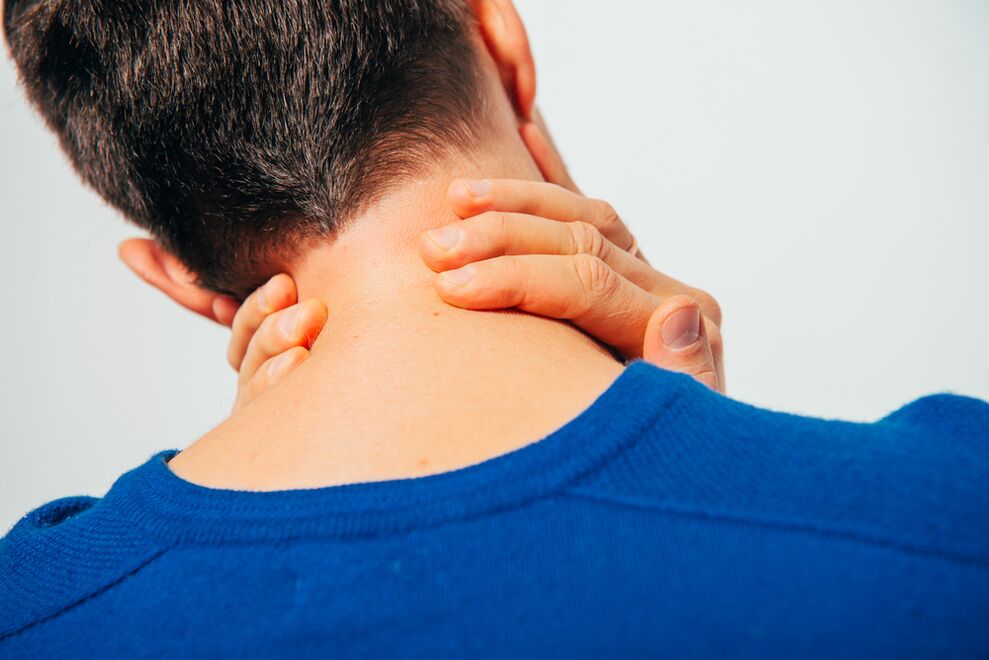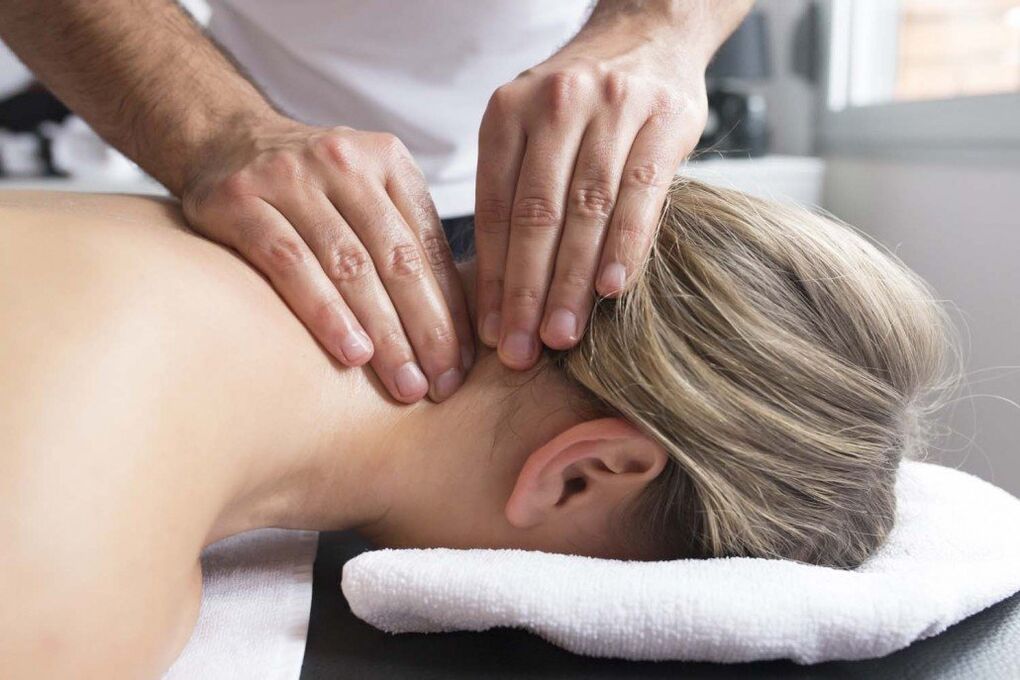Spinal osteochondrosis -It is a chronic dystrophic disease in which the intervertebral cartilage disk and vertebrates are deformed.Recently, you have to hear more and more often about this disease.Not surprisingly, because if osteochondrosis was considered a pathology of older people, it is now very "young".We live in the era of scientific and technological progress-we have elevators and escalators, transport and communication tools that allow you to quickly distract information, use minimal physical effort.As a result, for speed and comfort, we pay for the health of the spine.But don't disappoint, osteochondrosis is not a sentence.Let's find out what changes are made in the spine with osteochondrosis, how it is manifested and we will analyze modern methods of treatment for this condition.

Spine osteochondrosis: Causes
The spine is composed of the spine that is interconnected by cartilage intervertebral discs.They serve as shocking and provide spine elasticity and mobility.
Our body grows up to 20-25 years.At this time, the intervertebral disc is equipped with blood vessels, with an active nutrition.After the growth stops, the blood supply stops.Next, the disc gets energy from the surrounding tissues, mainly from the muscles.The wheels eat sponge when compressed, they give metabolic products, and by stretching they absorb nutrients.If for some reason, the intervertebral disc does not get enough power, it begins to break down.
Consider the causes of osteochondrosis of the spine:
- Tempting lifestyle.We already know that the cartilage disc is fed when compressing and stretching, and for this the spine must be moved.
- Forced posture.This applies to office workers and drivers, as prolonged seating, which is moving forward, causes an uneven load on the spine.Imagine that the whole mass of the upper body is not pressure on the whole disk daily, but at certain points.At these points, the force of cartilage tissue is concerned, causing it to be destroyed.
Long-term sitting on a computer when angled forward increases the spine load by 50-70%.

- Excessive physical activity.In addition to loading the spine, muscle tension occurs, resulting in a disorder of muscle circulation and the intervertebral disc does not receive the necessary nutrition.
- Wrong posture.A constant change in spinal configuration will overload intervertebral discs.
- Obesity.The excess mass of the upper body has a load on the spine.
- Age -related changes.This is a natural process that results in the metabolic processes of cartilage and bone tissue.
Spine changes with osteochondrosis
Osteochondrosis of the spine is characterized by a disorder of intervertebral discs (trophism).First of all, the shape of the disk changes - it cuts to the spinal canal.If the intervertebral disk is stabbed without breaking of fiber-chispheric rim, then this condition is calledProtrusion.This is one of the stages of osteochondrosis of the spine.The next step is to break down the fiber-chrifot rim, accompanied by the movement of the intervertebral disk eaded nuclei.So formedIntervertebral hernia.
Spine bone tissue also participates in the process.It grows and forms so -called osteophytes or bone spots.They reimbursement of spine load while restrictions.
Osteophytes are often referred to as "salt deposition".In fact, there are no salts.These are bone formations that with the help of massage and manual equipment, of course, will not work.
Osteochondrosis muscles are also subject to certain changes.In order for the deformed spine to be normal, they are in constant voltage.Muscle cramps for osteochondrosis are accompanied by pain and further worsening the trophic structures of the spine.
The change in the form of spine structures results in the movement of the spine and intervertebral discs.In this case, the radical nerves are compressed (compressed).They become inflammatory and cause severe pain.
Osteochondrosis of the spine is manifested by radical syndrome in the legs, arms, chest and internal organs - the heart, lungs, stomachs, intestines, kidneys, etc. for osteochondria for the arms, legs, facial and tongue - is also a sign of compression of the radical nerve.
Symptoms of osteochondrosis of the spine
Whatever it is in the pathological process of the spine, the disease is manifested by two main symptoms - the pain and the spine, as well as the movement of the limbs.
Symptoms of osteochondrosis of the cervical spine

The cervical vertebrates are the smallest and most mobile.In addition, the blood vessels that feed on the brain pass through them.That is why the cervical spine is considered the most insecure.Osteochondrosis of the cervical region is characterized by characteristic symptoms:
- Pain in the neck that can be given to the back, shoulders, spatula.The pain becomes intense during tilt;
- Headache, dizziness, noise and ear bells.Hearing loss is possible in the light of the disease;
Headache in osteochondrosis is a very common event.People with systemic headache should definitely be examined by a neuropathologist.According to statistics, 30% of cases cause headaches to cervical osteochondrosis.
- Pain in the hands and chest.Restriction of hand movements;
- Disruption of coordination of movements;
- In some cases, vision and speech are experienced;
- Increase blood pressure.
Spine artery syndrome with cervical osteochondrosis is a complex of symptoms that should be careful.The spine artery nourishes the brain and when compressed, its blood flow is disturbed.Spine artery syndrome with cervical osteochondrosis has the following signs:If you have these symptoms, you immediately need to contact a neurologist.Spine artery syndrome is the most common cause of stroke at a young age.
- Noise in the ears;
- Headache, dizziness;
- Tachycardia (rapid heartbeat);
- Visual disorder, the appearance of "owls" in front of the eyes;
- Loss of consciousness.
Symptoms of osteochondrosis of the chest
The chest spine is less mobile than the cervix or lumbar.In this sense, it is more difficult to heal.The chest is vital organs - the heart, large blood vessels and lungs, so the symptoms of osteochondrosis in the chest region can be confused with chest diseases.
Signs of Chest Spine Osteochondrosis:
- Pains pain between the shoulder blades and the chest.The pain feels intensively after being in a internal state or during physical effort;
- Pain and firmness of movements during breathing;
- Pain between the ribs (intercostal neuralgia);
- Skin numbness, feeling of "batibums";
- Pain in the heart, lungs, stomach and kidneys;
- Restriction of movement during inclinations, raising body hands and alternation.

How to distinguish osteochondrosis of the spine from heart pain?
Chest spine osteochondrosis may be so intense that you can easily doubt heart disease.Let's take a look at how osteochondrosis is different from heart pain, with angina pectoral:
- Duration of pain.With osteochondrosis of the spine, the pain can last for days and weeks, and with angina pectorator for up to 10 minutes.
- Pain to move (cessation).With angina pectoral, the pain is stopped by nitroglycerin, and with osteochondrosis, analgesics are effective - diclofenac, meloxicam, etc.
- ECG changes are characteristic of cardiac pathology, and osteochondrosis is normal.
Symptoms of osteochondrosis of the lumbar spine
The lumbar spine is most susceptible to physical effort.Any of our activities at the household level to some extent covers this part of the spine.Almost everyone had pain in the lower back, and this is the most common symptom with which they are looking for a doctor for help.
Signs of osteochondrosis of the lumbar spine:
- Pain in the back, "shots" during physical effort and long -term forced position.Pain in the lumbar region osteochondrosis combines the termSciatica.
- Disruption of genital function.Pain in the kidney area, difficulty in urination.Women may have menstrual cycle disorders, pain in the ovaries and uterus, and men have problems.
- Pain in the buttocks, hips, lower legs and legs.Feet sensitivity disorders, quarrels, numbness.
- With prolonged compression of nerve roots and blood vessels, lightness may develop.During walking, a person begins to limbs and must stop and rest.
Treatment of osteochondrosis of the spine
Regarding the symptoms of osteochondrosis, the logical question arises - what should we do next, how to treat osteochondrosis?Fortunately, we cure osteochondrosis.Small reservation - timely treatment and desire to get involved in your health.And many in our hands.Like any chronic disease, spinal osteochondrosis has been treated for a long time.Do not hope that you can get rid of symptoms in a week.
Currently, conservative treatment is actively trained, which covers the entire spectrum of measures.The main thing that the patient needs to understand is passive treatment.With severe pain, you will have painkillers and anti -anti -anti -remedies as well as muscle calmers.But in some cases, you can do it without medication.Let's consider treatment methods used to treat osteochondrosis.
Preparations for the treatment of osteochondrosis of the spine
- NSAIDs (NSAIDs).These medications will help alleviate pain and inflammation.They are used in the form of injections, tablets and local products - gels or ointments.It is important to keep in mind that unwanted anti -anti -anti -osteochondrosis treatments can not be taken on current, as they can cause gastritis and gastric ulcer.
- Musorelaxants- A drug group that relieves muscle tension, thereby reducing the load on the spine and improves their blood circulation.They relieve muscle spasms with osteochondrosis of the spine.It works most effectively with NSAIDs.
- Chondroprotectors- Restore and protect the cartilage from destruction.They are elements of the articular cartilage structure (hyaluronic acid derivatives).They are used as tablets, intramuscularly and intra -fast.Their significant disadvantage is quite long treatment.The optimal course is 6 months.Not all patients can obey the recommendations throughout this time.
- Vasodilatory medicationsFor osteochondrosis it is used to improve blood circulation.
It should be noted that any medical drug only relieves pain with osteochondrosis, but does not cure the problem.Medications will not push the vertebrates and intervertebral discs on the ground and will not return to the former anatomical structure.
Non -curved methods of treating osteochondrosis

- Massage.The main task of massage for osteochondrosis of the spine is to release muscle spasms and increase blood flow.Thus, cartilage nutrition improves, edema decreases, pain decreases, movement in the joints is restored.Massage, unfortunately, gives a temporary effect.We know that there are changes in the spine with osteochondrosis, so it will not work for its full recovery.Moreover, if osteophytes are already formed that are mistaken for "salt deposits".
- Manual therapy.Previously, this method of treatment for osteochondrosis was quite skeptical.However, a large -scale clinical trial in 2017 has shown the efficacy of guidelines.However, osteochondrosis manual therapy should be taken very carefully.First of all, you need to make a MRI to determine the exact place of damage.Many manual therapists work intuitively, without certain knowledge and skills.But this is not a case of intuition, especially intervertebral hernia.A manual therapist who has an inappropriate approach can harm more than the disease itself, so before deciding on such procedures, it should be responsible for the search for a specialist.
- Medical Physical Education (Exercise Therapy)- Perhaps the most effective method of treating osteochondrosis.Since this disease is most often the result of the absence of spine, physical exercise is what you need!The specialist will select the combination of exercises and observe their implementation.In order to maintain the effect after the training course, it is necessary to continue the exercises.You can choose a sport that is suitable for people with osteochondrosis.The ideal option for osteochondrosis of the spine is to swim, yoga and pilates.It is good to hang on a horizontal bar several times a week (if there are no contraindications).Stretching exercises help to "remove" the spine and strain muscles.
Not all sports are indicated for osteochondrosis.For example, running can exacerbate the disease.Therefore, before making this or this decision, it is advisable to consult a physiotherapy specialist.
And, of course, you have to think about changing your lifestyle.Osteochondrosis is a chronic disease, so treatment is necessary for a long time.Medications or massage will not return the spine to the intact appearance and this should be reconciled.This means that it will be necessary not only to do special exercises but also to change some of your habits.
Prevention of osteochondrosis of the spine
- First, it is necessary to pay attention to your workplace.If you sit in the session, try to avoid the angled forward.The chair should be with heavy backs and waist curves.
- Follow the posture.It is not only beautiful but also good for health.
- Try not to lift weight.If necessary, place a special bandage or corset on the back.
- If the cause of osteochondrosis of the spine is overweight, you will have to get rid of extra pounds.
Spine health is in our hands!















































